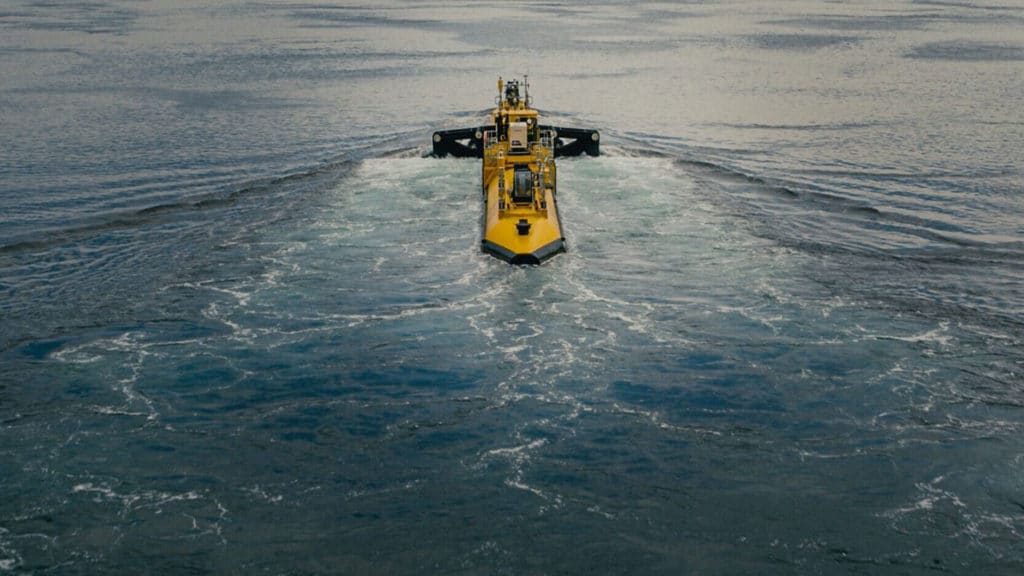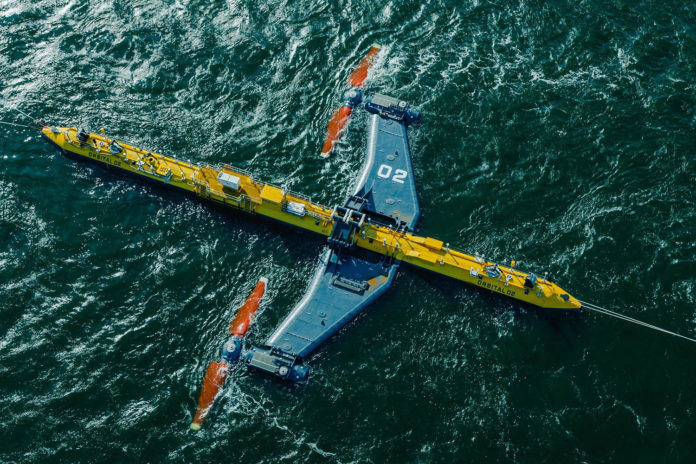Orbital Marine Power’s O2, the world’s most powerful tidal turbine, has started grid-connected power generation at the European Marine Energy Centre (EMEC) in Orkney. The innovative, floating turbine was towed up to Orkney in June before being anchored in the fast-moving waters of the Fall of Warness, where a subsea cable connects the 2MW offshore unit to the local onshore electricity network and has begun operation.
Manufactured and launched in Dundee earlier in the year before being towed up to Orkney, the O2 is Orbital’s first commercial turbine. The floating turbine is 74-meter long and weighs about 680 tons. It is expected to operate in the waters off Orkney for the next 15 years with the capacity to meet the annual electricity demand of around 2,000 UK homes with clean, predictable power from the fast-flowing waters and reduce CO2 emissions by 2.2 tons per year. Electricity is supplied through a submarine cable at the rear of the structure.

Outwardly, O2 resembles an airplane. It has a 1-MW turbine nacelle on either side of its hull with 10-meter blades capturing flowing tidal energy over a swept area of more than 600 square meters. The floating station is attached to the seabed with four anchors.
Another groundbreaking element of the project is that the O2 will provide power to EMEC’s onshore electrolyzer to generate green hydrogen that will be used to demonstrate decarbonization of wider energy requirements.
“This is a major milestone for the O2, and I would like to commend the whole team at Orbital and our supply chain for delivering this pioneering renewable energy project safely and successfully,” said Andrew Scott, Orbital CEO. “Our vision is that this project is the trigger to the harnessing of tidal stream resources around the world to play a role in tackling climate change whilst creating a new, low-carbon industrial sector.“
The construction of the O2 turbine has been made possible by public funding through the ethical investment platform, Abundance Investment. It was also supported by the Scottish Government through the Saltire Tidal Energy Challenge Fund. The O2 project has received funding from the European Union’s Horizon 2020 research and innovation program under the FloTEC project and from the European Regional Development Fund through the Interreg North-West Europe program under the ITEG project.
Orbital Marine Power is now planning to scale up operations with multi-MW installations. And the costs are expected to drop significantly as the technology is rolled out.
